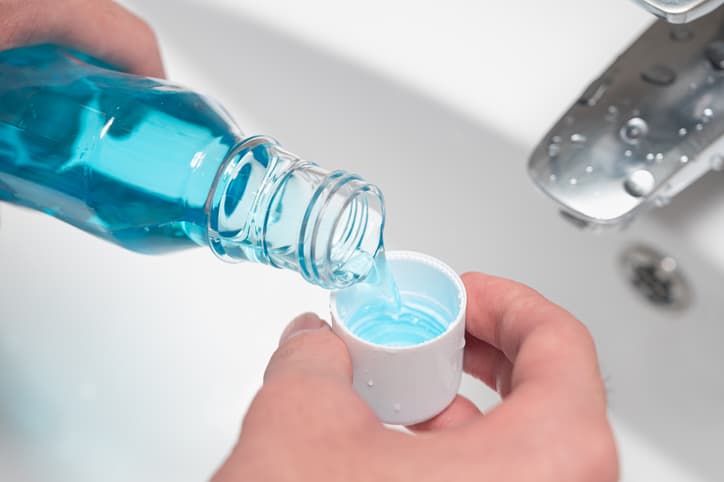
Mouthwash’s effectiveness comes down to its ingredients. Whereas some strictly produce a fresh scent, others penetrate deeper to eliminate the germs causing the smell. By understanding the difference between the two, you can choose the best mouthwash for bad breath and kiss your halitosis goodbye.
Therapeutic or Cosmetic Mouthwashes
Mouthwashes fall into one of two categories: therapeutic or cosmetic. Cosmetic mouthwashes are those that mask bad breath, rather than cure it. These mouthwashes typically contain mint flavouring that, although gives off a fresh fragrance, won’t kill the bacteria causing your bad breath in the first place. Therapeutic mouthwashes are those that contain ingredients which do kill odorous bacteria and offer other oral benefits as well – fighting plaque or even whitening teeth, for instance.
In some cases, a quick cosmetic touch-up with a sugarless mint or piece of gum is all you need to feel fresh. But if you are adding mouthwash to your daily oral hygiene routine, the best mouthwash for bad breath should offer more than just a pleasant taste.
Ingredients in Mouthwashes to Kill Bad Breath:
Antibacterial Agents
Bad breath is caused by bacteria, and the mouth is the perfect place for it to multiply. Because your mouth is moist, warm and introduced to foreign items throughout the day, germs can easily spread over the tongue and between teeth, making your breath less than pleasant. An effective mouthwash usually contains an antibacterial agent such as alcohol to help remove the germs responsible for bad breath.
Germicides
Some mouthwashes, use a germicide like cetylpyridinium chloride (CPC) not only to kill germs but claims to also reduce plaque buildup. Plaque is a major cause of tooth decay and gum disease, both of which can lead to bad breath that requires a solution that treats this cause. Germicides help keep your mouth healthy long after you swish with your mouthwash, thereby keeping bad breath at bay.
Fluoride
Another helpful ingredient to look for is fluoride. When used regularly, according to the American Dental Association (ADA), fluoride actually helps strengthen tooth enamel so that it’s less susceptible to decay. Stronger teeth can mean less plaque buildup and better breath overall, especially when fluoride is part of a daily oral hygiene routine.
There are plenty of mouthwashes to choose from, but some only mask bad breath. By choosing a product with the right ingredients, you don’t just cover up embarrassing odours, but help treat them at their source so you enjoy fresh breath all day long. Who needs gum and mints when you have healthy teeth and gums?
